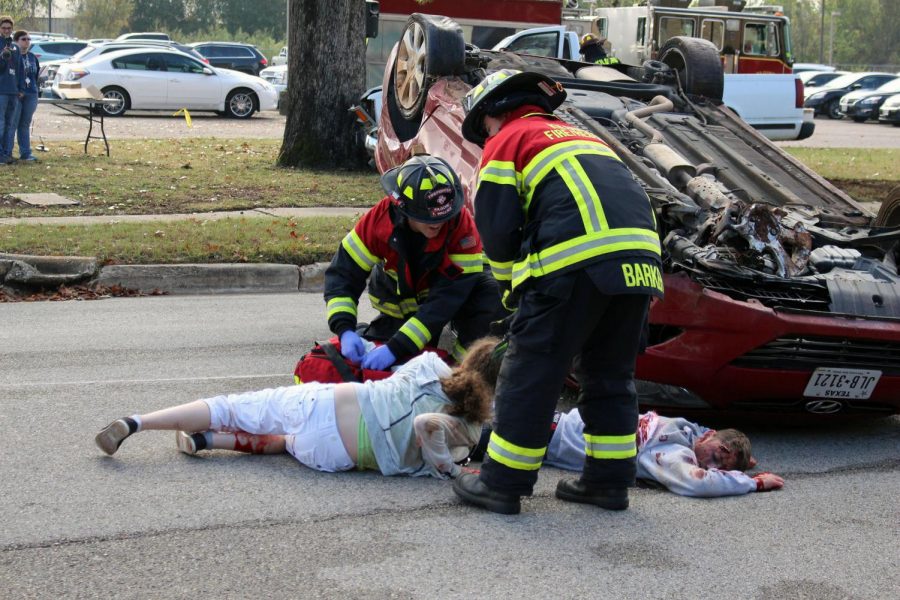OPINION: Was Shattered Dreams too traumatic or not enough?
First responders approach mock victims and seniors Bailey Green and Elijah Williams.
In the wake of last week’s Shattered Dreams presentation, we are left with a question: Does presenting a drunk-driving scenario do enough to prevent students from drinking or driving, or does it do too much? The Shattered Dreams program, involving primarily a simulated traffic accident with students involved, followed by a speaker and funeral service, is the result of a partnership between Memorial Hermann Texas Trauma Institute and various high schools – the newest edition involving our very own high school.
Despite its nearly traumatic nature, Shattered Dreams does more good than showing its results in statistical analysis and drawing members of the community together in a common goal.
According to polls taken before and after an intensive Shattered Dreams presentation at Karnes City High School, 16 percent more students reported that they felt they better understood the consequences behind drinking and driving after the program, and 95 percent total felt they understood the realities of drinking and driving post-Shattered Dreams. These results show what we already know: that seriously showing students the dangers of drinking and driving affects perception, if not behavior.
From a different angle, it is an amazing feat every time one of these presentations is carried out. In the case of our own school, efforts involved student actors, emergency medical services, local police officers, Rader funeral home, local lawyers, and so on. A concerted movement of such widely-spread community members and organizations is notable in its own right. Even if the results aren’t shown as much in rates of student drinking and driving accidents, the fact that these forces came together to spread a message for the community’s sake shows a big part of community unity and already increases awareness of drunk driving risks for all those involved especially.
The main possible drawback of this program is trauma. Later that day on Thursday, some student actors were contacted by very concerned friends who didn’t realize what they were seeing when the Shattered Dreams presentation took place. Students connected with these actors who go to other schools and only saw the simulated accident through social media clips are in danger of legitimate trauma. One local professional therapist noted to me that a traumatic experience could be something as simple as thinking that you saw someone killed or having a reasonable fear that someone in connection with you may end up dead. These risks are notable, but confused students can be quickly corrected, and it’s made clear early on to students viewing the program in person that everything they are about to see is a simulation.
Overall, the Shattered Dreams program should be more frequent in high schools in general due to its effect on students’ views of drinking and driving and the risks therein and because it establishes valuable connections between local emergency personnel, students, and school officials.


